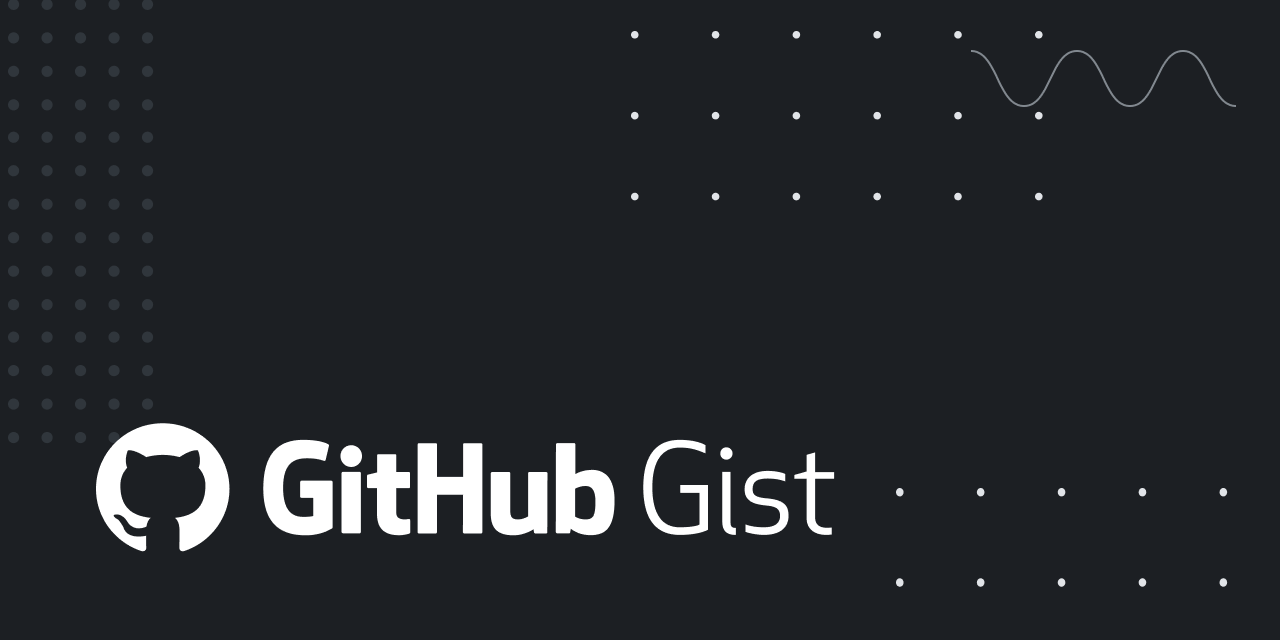Just an explorer in the threadiverse.
- 12 Posts
- 214 Comments

 6·2 years ago
6·2 years agoI had a look through the comments on this HN thread the other day and came away more intrigued by https://github.com/openobserve/openobserve than hyperdx. Hyperdx is built on top of clickhouse whereas open observe has it’s own storage engines based on parquet files that can be accessed from local disk, S3, or a few other protocols.
I haven’t tried either option yet… I’m, currently using netdata for metrics and don’t do anything special for logs or tracing, but at tiny self-hosting scale I often find software with it’s own storage engines (often sqlite) to be extra hassle-free. I’m curious to kick the tires on openobserve for that reason.

 21·2 years ago
21·2 years agoFor the latest version of lemmy, hot sort works in the new fashion. There is a pull request with further implementation details linked in the GitHub issue.

 4·2 years ago
4·2 years agoAh, fair enough. My response doesn’t apply then.

 205·2 years ago
205·2 years agoYou misunderstand what the Hot rank is doing. It’s not balancing newness vs hotness, it’s scaling hotness according to community size. This might feel like newness if you’re focused on vote counts as a proxy for post age, but it’s a different approach. See https://github.com/LemmyNet/lemmy/issues/3622 for details.
There’s a couple ways to think about this:
- There are a handful of Lemmy communities that are just WAY more active than everything else. The main feeds are kind of lame if you have to scroll 300 posts it to find anything other than a shit post from the same 3 communities. Scaled Hot rank shows a greater variety of communities by making it easier small communities to get ranked hotly.
- Or you can consider Hotness to be a rough measure of what percentage of people who have seen the post interacted with it. A post with 500 upvotes in a community with 10,000 active users is kind of popular, but only 5% of the people likely to have scrolled passed it cared about it. A post with 50 upvotes in a community with 200 active members is much MORE popular relatively even though the absolute numbers are smaller.
At any rate, this preference toward smaller communities in hot is a recent change and deliberate. While they might further tweak the scaling factors, I wouldn’t expect it to be drastically different. It sounds to me like what you want is Top, Active, or Most Comments. All these are unscaled according to community size and will get you top posts by their absolute metric rather than posts that are doing well relative to their community size.
This is a very strong explanation of what’s going on. And as a follow-up, I believe that ZeroTier present a single Ethernet broadcast domain, and so WoL tricks are more likely to work naturally there than with Wireguard. I haven’t used ZeroTier, and I do use Wireguard via Tailscale/Headscale. I’ve never missed the Ethernet features of ZeroTier and they CAN result in a very chatty wan if you’re not careful. But I think ZT would make this straightforward.
Though as other people note… the simplest/least-disruptive change is probably to expose some scripty thing on the rpi that can be triggered via be triggered over a routed protocol and then have the rpi emit the Ethernet broadcast packets from the physical network.
 7·2 years ago
7·2 years agoI dunno how to hotlink, but if you scroll to the active users graph at https://fedidb.org/software/lemmy you can see there’s been like a 25% dropoff in active users since the peak in July. Lemmy has still grown 50x since May, and it’s much MUCH more active than it was then. But we’ve definitely crested a peak and not everyone who gave Lemmy a shot then is sticking around in a monthly basis.
This isn’t necessarily bad. Lemmy is still young and has many rough edges, it wasn’t realistic to win all the users that tried it on ease-of-use in a head to head with reddit. And Mastodon has had multiple growth waves interspersed with periods of declining usage, but with the spikes has grown ie remained stable overall. Early-stage commercial social media have big ups and downs in engagement and growth as well, and just like lemmy those ups and downs are often externally driven… when competitors mess up, when a big global news story hits, when a major sporting event happens… these can all be catalysts for one-time growth. It’s not a straight line.
Time will tell what user level we stabilize at in the short-term and what events spur new growth, but it’s normal to have a big expansion be followed by some degree of contraction.

 4·2 years ago
4·2 years agoWith the refrigeration, which do you consider the canonical community to follow now? You mod both, right? Are you going to keep the bit posting to both?

 2·2 years ago
2·2 years agoNo no, sorry. I mean can I still have all my network traffic go through some VPN service (mine or a providers) while Tailscale is activated?
Tailscale just partnered with Mullvad so this works out of the box for that setup: https://tailscale.com/blog/mullvad-integration/
For others, it’s a “yes on paper” situation. It will probably often not work out of the box, but it seems likely to be possible as an advanced configuration. At the end of the line of possibilities, it would definitely be possible to set up a couple of docker containers as one-armed routers, one with your VPN and one with Tailscale as an exit node. Then they can each have their own networking stack and you can set up your own routes and DNS delegating only the necessary bits to each one. That’s a pretty advanced setup and you may not have the knowhow for it, but it demonstrates what’s possible.

 1·2 years ago
1·2 years agoTo a first approximation, Tailscale/Headscale don’t route and traffic.
Ah, well damn. Is there a way to achieve this while using Tailscale as well, or is that even recommended?
Is there a way to achieve what? Force tailscale to route all traffic through the DERP servers? I don’t know, and I don’t know why you’d want to. When my laptop is at home on the same network as my file-server, I certainly don’t want tailscale sending filserver traffic out to my Headscale server on the Internet just to download it back to my laptop on the same network it came from. I want NAT traversal to allow my laptop and file-server to negotiate the most efficient network path that works for them… whether that’s within my home lab when I’m there, across the internet when I’m traveling, or routing through the DERP server when no other option works.
OpenVPN or vanilla Wireguard are commonly setup with simple hub-and-spoke routing topologies that send all VPN traffic through “the VPN server”, but this is generally slower path than a direct connection. It might be imperceptibly slower over the Internet, but it will be MUCH slower than the local network unless you do some split-dns shenanigans to special-case the local-network scenario. With Tailscale, it all more or less works the same wherever you are which is a big benefit. Of course excepting if you have a true multigigabit network at home and the encryption overhead slows you down… Wireguard is pretty fast though and not a problematic throughout limiter for the vast majority of cases.

 13·2 years ago
13·2 years agoHave a read through https://tailscale.com/blog/how-nat-traversal-works/
You, and many commenters are pretty confused about out tailscale/Headscale work.
- To a first approximation, Tailscale/Headscale don’t route and traffic. They perform NAT traversal and data flows directly between nodes on the tailnet, without traversing Headscale/Tailscale directly.
- If NAT traversal fails badly enough, it’s POSSIBLE that bulk traffic can flow through the headscale/tailscale DERP nodes… but that’s an unusual scenario.
- You probably can’t run Headscale from your home network and have it perform the NAT traversal functions correctly. Of course, I can’t know that for sure because I don’t know anything about your ISP… but home ISPs preventing Headscale from doing it’s NAT traversal job are the norm… one would be pleasantly surprised to find that a home network can do that properly.
- Are younreally expecting 10gb/s speeds over your encrypted links? I don’t want to say it’s impossible, people do it… but you’d generally only expect to see this on fairly burly servers that are properly configured. Tailscale just in April bragged about hitting 10gb speeds with recent optimizations: https://tailscale.com/blog/more-throughput/ and on home hardware with novice configd I’d generally expect to see roughly more like single gigabit.

 11·2 years ago
11·2 years agoI don’t know the answer to your question, though I suspect it’s that Jellyfin doesn’t support menus.
What I’ve always done is rip each track to a video file. Jellyfin’s movie metadata DOES support extras: https://jellyfin.org/docs/general/server/media/movies/ and video formats like mkv support additional audio and subtitle tracks. With multi-track video format and extras support in the Jellyfin native menus… it’s possible to rip the vast majority of DVD content into Jellyfin. But ISO is not the preferred format to do it.
The main thing you’d lose here would be interactive menu features or choose-your-own adventure video codes into menus. Those DVD titles are pretty rare though.
VLC might have DVD menu support for ISOs, fwiw. I have a vague recollection it might, but I’m not at all sure.

 81·2 years ago
81·2 years agoI don’t know what’s up on your case, but I would not jump to the conclusion that it’s impossible to use tailscale with any other VPN in any circumstance.
Rather, tailscale and Mullvad will now work easily and out of the box. For other VPNs, you may need to do understand the topology and routing of virtual devices and have the technical ability and system permissions to make deep networking changes.
So I’d expect one can probably find a way for most things to coexist on a Linux server. On a non-rootrr android phone? I’m less confident.
Have you emailed admin@lemmy.world to try to get reinstated? This all seems like a pretty reasonable explanation if it isn’t repeated behavior.

 1·2 years ago
1·2 years agoWhat apps? It’s pretty common for media apps to have their own brightness settings. Netflix, Jellyfin, and VLC all have this at minimum.
So I have a question, what can I do to prevent that from happening? Apart from hosting everything on my own hardware of course, for now I prefer to use VPS for different reasons.
Others have mentioned that client-caching can act as a read-only stopgap while you restore Vaultwarden.
But otherwise the solution is backup/restore. If you run Vaultwarden in docker or podman container using volumes to hold state… then you know that as long as you can restart Vaultwarden without losing data that you also know exactly what data needs to be backed up and what needs to be done to restore it. Set up a nightly cron job somewhere (your laptop is fine enough if you don’t have somewhere better) to shut down Vaultwarden, rsync it’s volume dirs, and start it up again. If you VPS explodes, copy these directories to a new VPS at the same DNS name and restart Vaultwarden using the same podman or docker-compose setup.
All that said, keeypass+filesync is a great solution as well. The reason I moved to Vaultwarden was so I could share passwords with others in a controlled way. For single-user, I prefer how keypass folders work and keepass generally has better organization features… I’d still be using it for only myself.
My take echoes this. If one puts any stock in streamer recommendations, Baalorlord who has at various times held spire world record winstreaks, has recently cited Monster Train as his current favorite spirelike (other than spire itself), and also cited Griftlands as a playthrough a highlight.
Baalor probably doesn’t have an opinion on Inscryption as he tends to avoid things with even a slight horror theme. I enjoyed what I played of Inscryption a lot, but very little about playing it evoked the vibe of playing spire. Monster Train is quite adjacent though, the mechanics are different enough to feel fresh but it slots into the same gameplay mood for me whereas Inscryption is just a different (and still very good) thing.
Neither has the tight balance of Spire or feels quite as deep strategically to me (though in all honesty I’m probably not a strong enough player to be trusted in this regard), but both are fun.

 10·2 years ago
10·2 years agoAnd just today with a comment by a world admin! Hopefully they’ll get it sorted soon.
That’s an interesting report but it’s possible to “work” at different latencies. And unless you have specialized audio capture/playback hardware and have done some tuning and testing to determine the lowest stable latency that your system is capable of achieving… “works” for you is likely to mean something very different than it does to someone who does a lot of music production.
It remains an interesting question to some users whether Wayland changes the minimum stable latency relative to X and if so whether it does so for better or worse.
I’d consider asking in a Linux audio or music production community (I’m not aware of any on Lemmy that are big enough to have a likely answer though). If music production is a primary use case and audio latency matters to you, almost no general users are going to be able to comment on the difference between X and Wayland from a latency perspective. There may not be a difference, but there might and you won’t be likely to learn about it outside of an audio-focused discussion.










Another user posted the blog where they discuss their speedup techniques: https://tailscale.com/blog/more-throughput/
It’s likely that the kernel version can use similar techniques to surpass the performance of the userspace version that tailscale uses, but no one has put in the work to to make the kernel implementation as sophisticated as the userspace one.